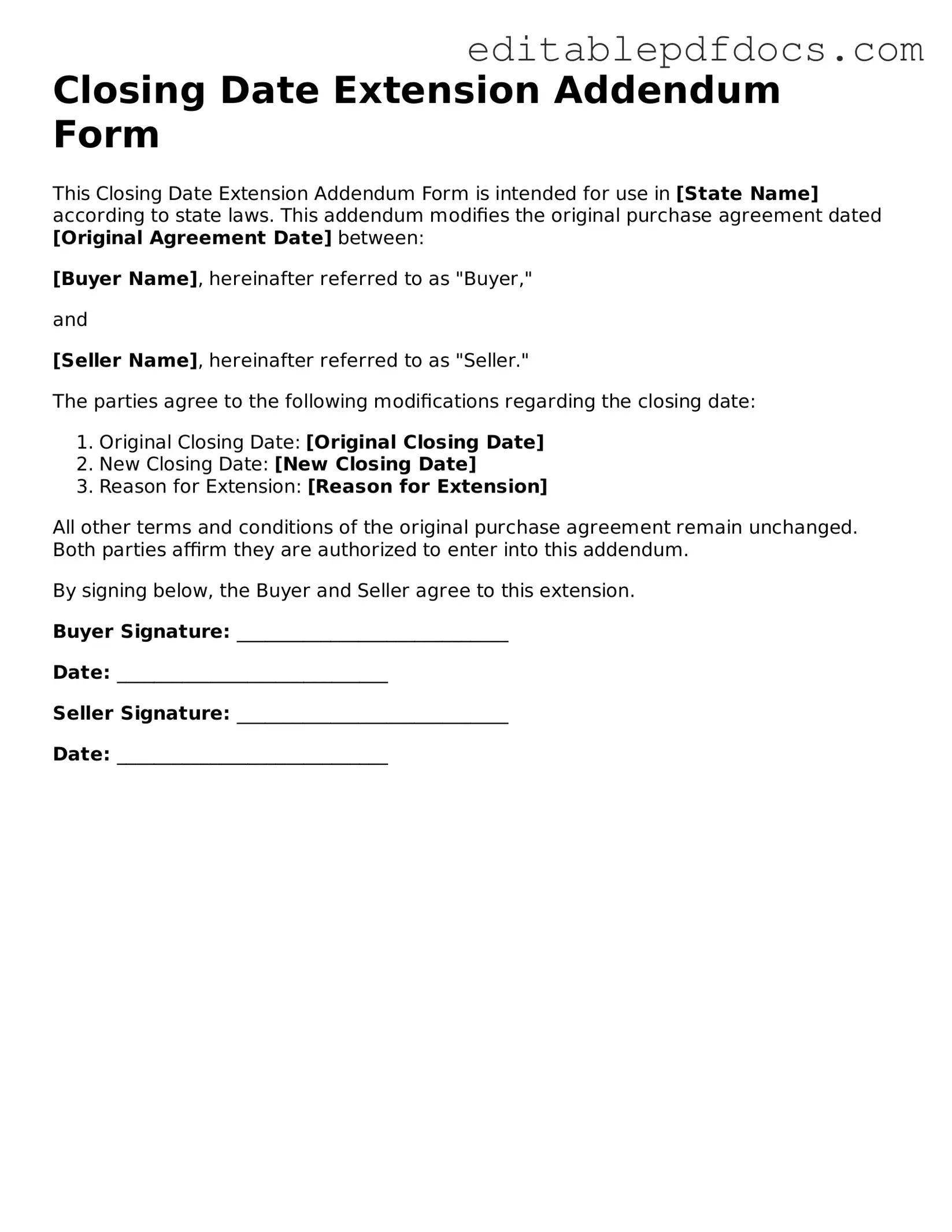The Closing Date Extension Addendum Form is an important document in real estate transactions, particularly when buyers and sellers need to adjust the timeline of a property sale. This form allows parties to formally extend the closing date, providing flexibility in the transaction process. It is typically used when unforeseen circumstances arise, such as delays in financing, inspections, or other contingencies that may prevent the original closing date from being met. By utilizing this addendum, both parties can ensure that their interests are protected while maintaining a clear understanding of the new timeline. The form includes essential details such as the original closing date, the proposed new closing date, and any specific conditions that must be met before the extension takes effect. This clarity helps to avoid misunderstandings and keeps the transaction on track. Properly completing and signing this addendum is crucial, as it serves as a formal agreement that can be referenced if disputes arise later in the process.
